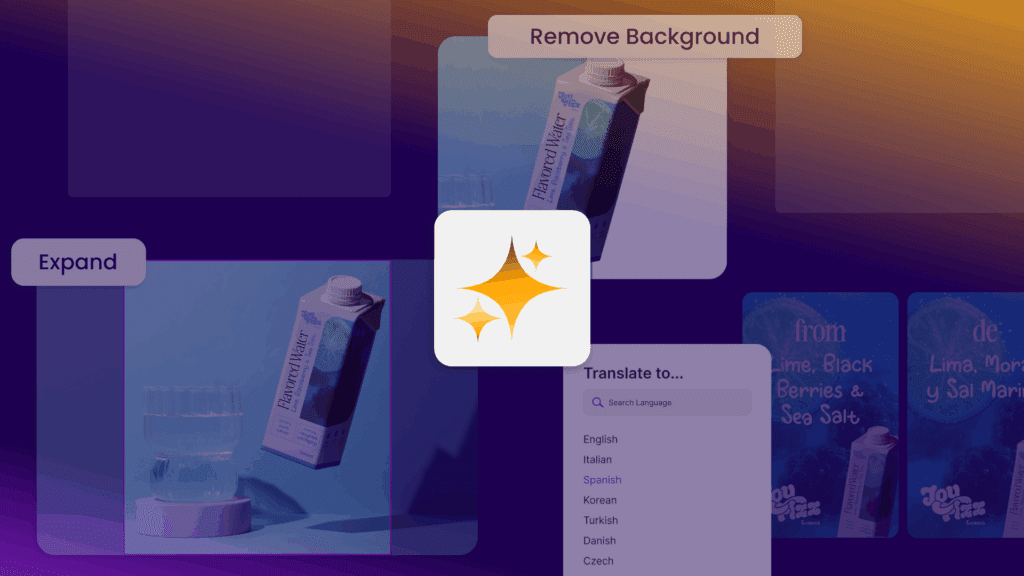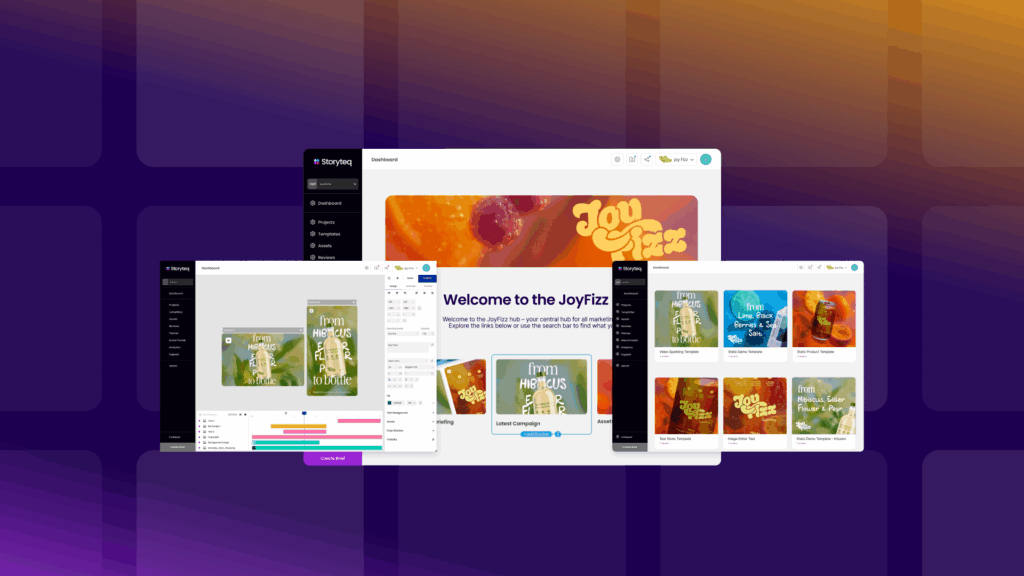What is workflow integration in marketing platforms?
In today’s complex marketing ecosystem, workflow integration refers to the seamless connection of marketing processes, tools, and teams within a unified system. This concept goes beyond simple tool connectivity—it represents a fundamental shift in how marketing activities are structured and executed. At its core, marketing workflow management encompasses the end-to-end journey of marketing assets and campaigns from ideation through to measurement.
Integrated workflows eliminate the traditional siloed approach where separate platforms handle storage, reviewing, and publishing content. Instead, they create a continuous, connected environment where each stage of marketing work flows naturally into the next. This stands in stark contrast to fragmented processes where marketers must constantly switch between tools—research shows that today’s enterprise knowledge workers switch between an average of 10 apps 25 times per day, resulting in disconnected communication and duplicative work.
The core components of integrated marketing workflows include:
- Centralised asset management and storage
- Collaborative review and approval processes
- Streamlined content creation and versioning
- Unified campaign activation and distribution
- Consolidated performance analytics and reporting
We approach workflow integration by viewing the entire value chain as one connected flow, from initial creative briefs to campaign activation and optimisation, enabling marketing teams to work more effectively together while maintaining visibility throughout the process.
Why seamless workflow integration transforms marketing automation platforms
Marketing teams today face unprecedented pressure to deliver personalised content across an expanding universe of channels. This reality has created what can be termed a “Marketing Execution Gap”—a widening chasm between content demands and available resources. Workflow integration addresses this fundamental challenge by restructuring how marketing work happens.
Traditional workflows often fail because they create unnecessary friction points. When tools don’t communicate with each other, valuable data about content usage and performance is lost. Many Digital Asset Management systems only allow for downloads rather than direct publishing, forcing marketers into repetitive manual processes of downloading, reformatting, and uploading assets across systems.
Temporary solutions which fail to address the root of the problem only prolong a trajectory of precarious revenue and poor Return on Ad Spend (ROAS). Would you simply continue to stock up on paracetamol if you were burdened daily with headaches?
The evolution from disconnected tools to integrated marketing platforms represents a fundamental shift in marketing technology strategy. Rather than addressing symptoms with band-aid solutions (adding headcount, outsourcing to agencies, or investing in more discrete MarTech), integrated platforms tackle the root cause by connecting previously separate functions into a cohesive ecosystem.
When workflows are truly integrated, marketing teams gain critical capabilities:
| Challenge | How Integration Addresses It |
|---|---|
| Content Silos | Single source of truth for all marketing assets |
| Approval Bottlenecks | Streamlined review processes with clear ownership |
| Scaling Production | Templates and automation for faster content creation |
| Brand Inconsistency | Centralised guidelines and controlled access |
| Performance Tracking | Connected analytics across the content lifecycle |
This transformation enhances collaboration between previously disconnected departments, creating a unified approach to marketing execution that can respond more effectively to market changes and consumer needs.
How integrated workflows enhance marketing efficiency and performance
The direct relationship between workflow efficiency in marketing and performance metrics becomes clear when examining the specific mechanisms through which integration creates value. Each stage of the marketing process benefits from connected systems in distinct ways:
In content creation, integrated workflows eliminate redundant work. For example, when creative teams can access a complete library of approved assets within the same environment they use for production, they avoid recreating existing materials. One global brand discovered multiple local branches were recreating similar campaigns from scratch because they couldn’t easily access or modify existing assets in their DAM system—resulting in wasted resources and delayed market entry.
Approval cycles accelerate dramatically when workflows are integrated. Instead of lengthy email chains and meetings, stakeholders can provide contextual feedback directly on assets within a unified system. This reduces the average review cycle from days to hours while creating a transparent record of all decisions and changes.
Distribution becomes more precise when the systems used to create content connect directly to channels where that content will appear. This eliminates the error-prone process of manually reformatting and uploading assets to different platforms. The result is not just faster campaign deployment but also better tracking of which assets are used where—critical information for performance measurement in content marketing platforms.
Perhaps most significantly, analytics become actionable when they’re integrated with content production systems. When performance data flows back into the same platform where content is created, marketing teams can make evidence-based decisions about what to produce next, creating a virtuous cycle of continuous improvement.
Implementing workflow integration: A step-by-step approach
Successfully implementing integrated marketing platforms requires a methodical approach that considers both technology and human factors. Begin with a comprehensive audit of your current marketing operations—not just cataloguing tools but understanding how work actually flows through your organisation.
Follow these key steps to implement integrated workflows effectively:
- Audit current workflows: Document existing processes, identify friction points, and measure time spent on manual tasks. Gartner recommends performing a technology audit every six months while encouraging team members to identify inefficiencies.
- Define optimal processes: Before selecting technology, determine the most efficient workflow for your marketing objectives. Often, teams continue using inefficient processes simply because “that’s how things have always been done.”
- Establish clear requirements: Create detailed specifications for what your integrated workflow should accomplish, focusing on critical use cases rather than hypothetical scenarios.
- Select appropriate technology: Choose solutions designed specifically for marketing workflows rather than generic project management tools. Consider how each solution will integrate with your existing MarTech stack.
- Plan for phased implementation: Rather than attempting a complete overnight transformation, implement integration in stages, beginning with the most critical workflow connections.
During implementation, it’s essential to involve both marketing and creative teams in the process. Their insights will help identify practical challenges and opportunities that might not be visible from a purely technical perspective.
Overcoming common challenges in marketing workflow integration
Despite the clear benefits, implementing integrated workflows isn’t without obstacles. Understanding these challenges in advance allows organisations to develop strategies for addressing them effectively.
Technical limitations often present the first hurdle. Legacy systems may use proprietary formats or lack modern APIs, making integration difficult. In these cases, it’s important to evaluate whether the value of keeping these systems outweighs the benefits of replacing them with more integration-friendly alternatives.
Team adoption represents perhaps the most significant challenge. People naturally resist changing established routines, especially when those changes require learning new tools or processes. Successful integration requires a thoughtful change management approach:
| Adoption Challenge | Solution Approach |
|---|---|
| Resistance to new tools | Allocate dedicated training time and create easy-to-follow documentation |
| Unclear benefits | Demonstrate tangible time savings and quality improvements |
| Process disruption | Implement changes gradually with transition periods |
| Siloed teams | Create cross-functional working groups to build shared ownership |
Process redesign complexities can also emerge as teams discover that existing workflows may need substantial modification to function in an integrated environment. The key is to distinguish between essential processes that should be preserved and inefficient habits that can be eliminated.
When facing these challenges, remember that adoption takes time. According to research, marketers use only 42% of their marketing technology’s capabilities on average—highlighting the importance of ongoing training and support beyond initial implementation.
The future of integrated marketing platforms: Emerging capabilities and trends
As marketing process automation continues to evolve, several emerging trends are reshaping the future of integrated workflows. These innovations promise to further enhance the value of connected marketing platforms:
AI-driven workflow optimisation represents one of the most promising developments. Artificial intelligence can analyse patterns in marketing processes to identify bottlenecks and suggest improvements. More advanced systems can even predict potential issues before they arise, allowing teams to proactively address problems rather than reactively solving them.
Predictive process management extends this concept further by using historical data to forecast resource needs and timelines for marketing initiatives. This capability helps teams plan more effectively and allocate resources where they’ll create the most value.
Cross-channel workflow intelligence enables truly omnichannel marketing by coordinating content creation and distribution across all platforms. Rather than treating each channel as a separate workflow, these systems create unified campaigns that maintain consistency while respecting the unique requirements of each platform.
As we look ahead, integrated platforms will increasingly incorporate these capabilities, creating even more powerful tools for marketing teams. We’re positioned at the forefront of this evolution, constantly developing our platform to support the future needs of marketing organisations.
The future belongs to marketing teams who can seamlessly connect their processes, people, and platforms. By implementing integrated workflows today, you’ll be prepared to thrive in tomorrow’s more complex marketing landscape.
Ready to transform your marketing workflows? Request a demo today to see how our platform can help you integrate your marketing processes for greater efficiency and impact.



